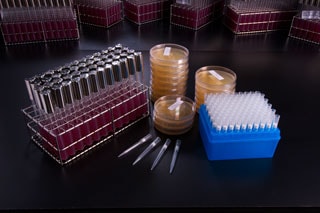The Antimicrobial Preservative Efficacy test measures the effectiveness of antimicrobial preservatives added to nonsterile dosage forms or multi-dose containers in order to inhibit the growth of microorganisms that may be introduced inadvertently, either during the manufacturing process or product use.
Antimicrobial effectiveness must be demonstrated on all injections packaged in multiple-dose containers, multiple-dose topical and oral forms, and other dosage forms which contain antimicrobial preservatives. This test should be performed on all aqueous-based products that include ophthalmic, otic, nasal, oral, irrigation, and dialysis fluids.
Testing performed by Nelson Labs meets the criteria set forth by the USP General Chapter 51 on Antimicrobial Effectiveness Testing. This test can also be performed to comply with requirements detailed in the European Pharmacopoeia or other international standards. We have extensive experience working with the USP organisms, as well as an excellent understanding of preservative systems and effective neutralization techniques. We provide scientifically sound data by plating in triplicate and offering multiple replicate testing. We also have the resources to test samples with minimal wait time.
Applicable Standards
- USP 51
- USP-EP



